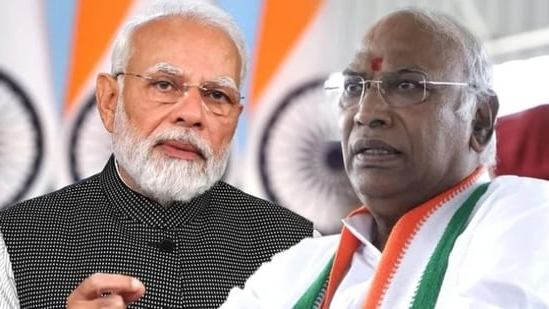Address
304 North Cardinal St.
Dorchester Center, MA 02124
Work Hours
Monday to Friday: 7AM - 7PM
Weekend: 10AM - 5PM

The diplomatic relationship between India and the United States has come under fresh scrutiny after controversial comments by former U.S. President Donald Trump and escalating tariff tensions. While the Indian government has taken a cautious diplomatic route, the opposition — particularly the Indian National Congress — has responded sharply, accusing Prime Minister Narendra Modi’s administration of “silence” in the face of economic threats and political disrespect.
This development comes at a sensitive time for India’s global image, trade ambitions, and domestic politics, especially as the country inches toward the next general election.
What Triggered the Controversy?
At the center of the storm is the potential reintroduction of U.S. tariffs on certain Indian exports, including textiles and electronics — a move speculated to be linked to Trump’s campaign rhetoric. These tariffs, if imposed, could reduce India’s export competitiveness and dent GDP by up to 0.4%, according to some economists.
The situation was made worse by Trump’s public criticism of India’s trade practices and his assertion that India has “taken advantage” of the U.S. in past bilateral trade agreements — claims widely viewed as exaggerated and politically motivated.
Congress Reacts: “Where Is Modi’s Voice?”
The Congress party has seized on the issue, criticizing the BJP-led government’s muted response. Senior Congress leaders have accused Modi of “watching silently” as India’s image is challenged on the international stage.
Their central argument: a strong government should respond strongly — especially when national economic interests are at stake. Congress alleges that Modi’s government, which has often projected itself as bold on foreign affairs, is now failing to stand up to economic bullying.
This rhetoric is resonating in political circles, especially among business owners and export-driven sectors worried about the long-term fallout.
The Geopolitical Context
This incident isn’t happening in isolation. Global trade relations are in flux due to:
India has been a key participant in multilateral forums like the G20, BRICS, and the Quad, presenting itself as a dependable trade and security partner. A potential tariff blow from the U.S. — if not countered diplomatically — could undermine India’s credibility with other allies and investors.
Economic Stakes for India
If new tariffs are imposed, they could:
Exporters and trade bodies are urging the government to engage in proactive diplomacy to resolve the dispute before it escalates.
Navigating the Road Ahead
The Indian government now finds itself at a crossroads:
Experts argue that a smart, nuanced diplomatic push is required — one that avoids public confrontation but reasserts India’s strategic importance to the U.S.
At the same time, opposition pressure is likely to grow, especially as economic nationalism becomes a key political theme ahead of 2026.
Final Thoughts
The tariff controversy is more than just a trade dispute — it’s a test of India’s global posture and domestic political coherence. How the Modi government navigates this challenge could have far-reaching implications — not only for India-U.S. ties but also for India’s internal political dynamics in a pre-election year.
As the world watches, India must decide whether quiet diplomacy or public assertion is the right tool for the moment.